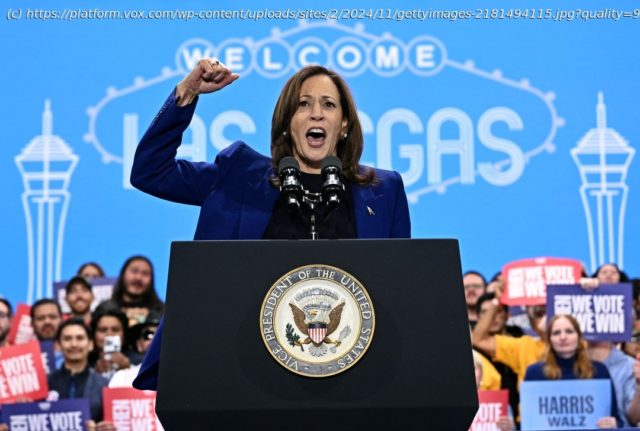Polls of the 2024 election show Kamala Harris and Donald Trump roughly tied in the Electoral College. Here are five reasons to think Harris will win and four reasons to think Trump will.
The 2024 presidential race is the closest on record. Donald Trump and Kamala Harris are separated by 1 percentage point or less both nationally and in the decisive battleground states. In the Electoral College, the two candidates are essentially tied, with the election turning on a deadlocked Pennsylvania, according to the New York Times’s polling average.
If one looks beyond the polling data, however, it is not difficult to tell a story about why each candidate is actually the favorite. Here are four reasons you should expect Trump to win the presidency Tuesday, and five to expect a Harris victory instead.Why you should expect a Trump win
In 2016 and 2020, polls badly underestimated Trump’s support, particularly in battleground states. There are reasons to fear that pollsters will miss in the same direction yet again.
One leading theory of pollsters’ recent woes goes like this: Americans who participate in surveys are systematically different — and more Democratic — than those who do not.
If you are highly politically engaged, very trustful of strangers, or both, then you’re going to be more inclined to respond to a phone call or text message from a pollster. After all, people who are eager to discuss politics are more liable to share their voting intentions when prompted. And those who aren’t wary of other people are more likely to engage with an unsolicited request for conversation.
This has always been true to an extent. But in the past, Republican voters weren’t dramatically less likely than Democratic ones to be highly engaged or trustful. Trump’s conquest of the GOP changed this. As Republicans unified behind a populist, anti-system conspiracy theorist, they made inroads with less politically active and trusting voters, while Democrats racked up large gains with college-educated voters, who have relatively high turnout rates and levels of social trust.
Throughout the past year, there have been signs that this realignment has continued apace, with Trump polling much better among low-propensity voters than reliable ones. And some pollsters are finding it much easier to reach Democrats than Republicans as a result. Nate Cohn, chief pollster for the New York Times, writes that white Democrats were 16 percent more likely than white Republicans to participate in his final surveys.
There are many ways for pollsters to counteract this bias, but the fundamental challenge it poses may prove insurmountable. You can try to make sure that low-propensity voters (i.e. those who sat out recent elections) are well-represented in your survey. But as Cohn notes, in his polls of previous elections, low-propensity voters that agreed to participate ultimately voted at much higher rates than such voters in general. Put differently: The politically disengaged voters who respond to polls are not representative of such voters, as they are more politically active (and thus, theoretically, more Democratic). Which isn’t entirely surprising since the very act of taking a poll is a form of political engagement.
Pollsters don’t want to underestimate Trump again. But the inescapable limitations of their methods may lead them to make the same mistake thrice.
Since the onset of post-pandemic inflation in 2022, incumbents the world over have struggled to retain power. Ruling parties have either lost seats or control of government altogether in Japan, Austria, Britain, Italy, and Germany, among other nations. And if polls hold steady, Justin Trudeau’s governing Liberal Party is poised to suffer a landslide defeat in next year’s Canadian election.
Americans appear to share this transcontinental desire for change. Both NBC News and YouGov find roughly 65 percent of Americans saying America is on “the wrong track,” while 26 percent say they’re “satisfied with the way things are going in the United States” in Gallup’s polling.






